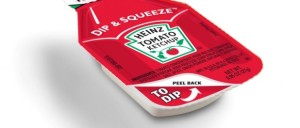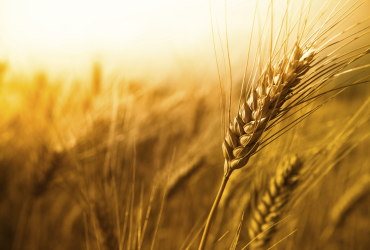By: Kristy Vest
That new food product which you have never tried before, but is still sitting there in your grocery cart, somehow caught your attention. It has not only caught your attention, but for some reason, you are willing to give it a try. The challenge for the food company producing the product doesn’t end there. Food companies want you to come back and buy their product again and again. Look throughout this post for examples of food packaging that might persuade you to put a product in your cart.
Chances are some sort of visual cue caught your eye and attracted you to the product in the first place. This isn’t by chance. If the company is large enough, its marketing department has used their expertise in colour, images, font, phrases and more to capture your interest and make you reach out for their product instead of the one that is right beside it. As a consumer you are aware of this; this isn’t a secret. In addition to visual cues, you are making your decisions based on price, nutrition, convenience and a host of other factors. For purposes of delving into food packaging, we will focus on the visual and physical nature of those enticing boxes, wrappers, and bottles.
![1)Ecologic Brands partnered with Truett-Hurst winery to create a cardboard wine bottle with an internal palstic liner.[1] This cardboard wine bottle is said to weigh 85% less than their glass counterparts, and produces 67% less of a carbon footprint. While talking statistics, this “molded pulp” wine bottle, made from compressed recycled cardboard, is 100% awesome.](https://sciencemeetsfood.org/wp-content/uploads/2014/11/CardboardWineBottle-248x300.jpg)
1) Ecologic Brands partnered with Truett-Hurst winery to create a cardboard wine bottle with an internal palstic liner.[1] This cardboard wine bottle is said to weigh 85% less than their glass counterparts, and produces 67% less of a carbon footprint. While talking statistics, this “molded pulp” wine bottle, made from compressed recycled cardboard, is 100% awesome.
It’s not just about the label. The company is communicating with you, starting a (silent) dialogue with their consumers. They are speaking with other physical components of the package. Single serving sizes, on-the-go packaging with utensils, fun shaped bottles, recycled materials used to construct the package or label, etc. Novelty and innovation don’t rest. In contrast, there are those consumers who desire simple. The credence attribute they crave is nostalgia. For them, too novel and too innovative makes them pick up the old-school Mason jar and refuel its comeback. In all cases, the packaging is speaking to the consumer. Whether the consumer likes what they hear or not will be one more factor determining if the product will make the cut and make it into the grocery cart.
![2)CCL Decorative Sleeves (CCL) has created glow-in-the-dark bottle sleeves for British water brand Whitewater.[2]](https://sciencemeetsfood.org/wp-content/uploads/2014/11/GlowingWaterBottle-e1415717028709-193x300.png)
2) CCL Decorative Sleeves (CCL) has created glow-in-the-dark bottle sleeves for British water brand Whitewater.[2]
The food package was probably once only required to be a suitable microenvironment that harboured your food. It was required to protect it from the harsh insults it will likely see at some point in its journey from the production line to the kitchen cupboard. Let’s not forget; those requirements are still very much present and still very much a top priority for the food producer. A brightly coloured package that successfully reaches the shopping cart will not get there twice if it fails to reach the consumer’s expectations.
If the product is beautifully packaged but presents an inferior food product that is broken to a crumb with no resemblance of what the picture displays, presents an off-rancid flavour due to oxidation, or is otherwise deteriorated, then the food package has failed. The determined process of quality control has failed. This is where food chemistry can come into play, informing the correct choice of packaging. This is the stuff that gets us Official Food Geeks excited. It certainly is a challenge of meeting all of the new and upcoming consumer expectations for a food product with an innovative, eye catching, novel food package that delivers a safe abd nutritious product WHILE meeting all of the sensory attributes and achieving all quality measures. All of this with the aim of delighting the consumer enough to choose that product again and again. (And again…)

3) Sometimes the most innovative ideas are the simplest take on tried and true products. By making the ketchup package “dip-able”, ketchup and french fries became much, much more convenient. Never underestimate the value of convenience in today’s market.
Now, you have homework. Next time you are in the grocery store, really look at the packaging used for your favourite foods. There are a lot of innovative solutions for getting your favourite foods off the shelf and onto your table.
What are some of your favourite food packaging innovations? Share with us in the comments below!
References:
[1] Mail Online, UK. Introducing the Cardboard Wine Bottle http://www.dailymail.co.uk/femail/article-2608103/Introducing-CARDBOARD-wine-bottle-New-eco-friendly-design-recycled-material-67-cent-smaller-carbon-footprint-glass.html Accessed October 30, 2014
[2] Hellyer, S. (2014). Food Production Daily. Com. CCL Decorative Sleeves design glow-in-the-dark packaging for Whitewater. http://www.foodproductiondaily.com/Packaging/CCL-Decorative-Sleeves-In2-Rehab-Brands Accessed October 30, 2014
Image: http://www.foodproductiondaily.com/Packaging/CCL-Decorative-Sleeves-In2-Rehab-Brands
[3] Image: http://plasticsmakeitpossible.com/2010/05/plastic-innovations-in-packaging-through-the-decades/ Accessed October 30, 2014






I have to go with the pop up bowl for microwave popcorn. Such a cool, innovative, functional package!